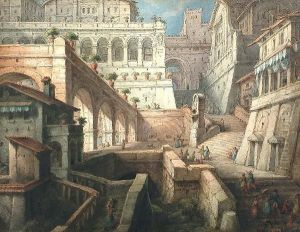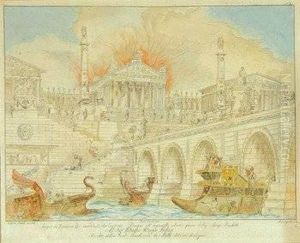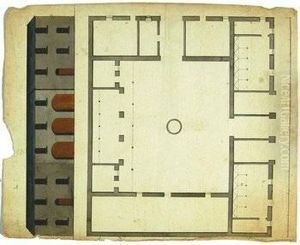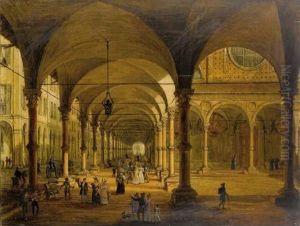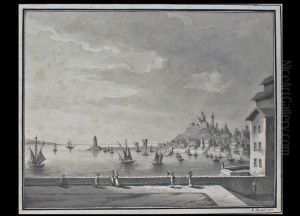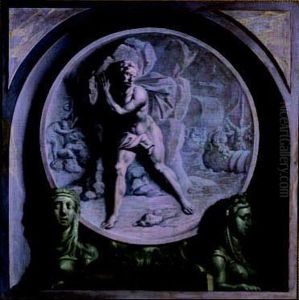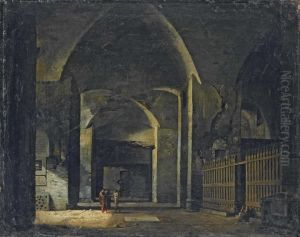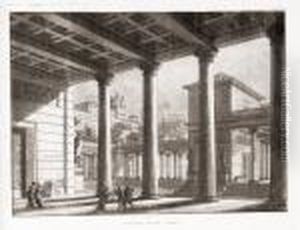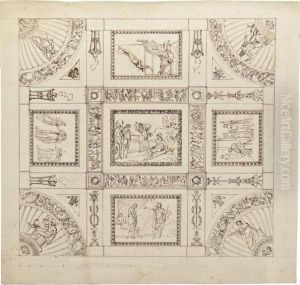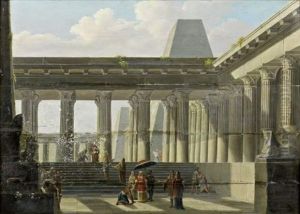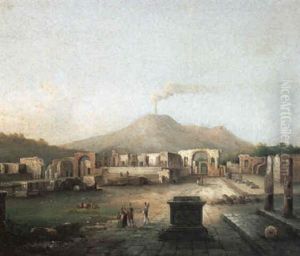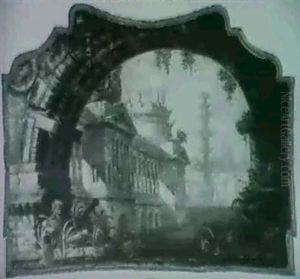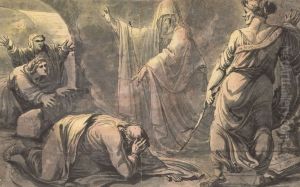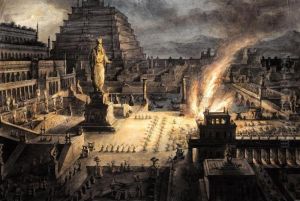Antonio Basoli Paintings
Antonio Basoli was an Italian artist, primarily known for his work in painting, set design, and engraving. Born on April 15, 1774, in Castel Guelfo di Bologna, Italy, Basoli was a prominent figure in the cultural circles of Bologna during the late 18th and early 19th centuries. He demonstrated a strong aptitude for the arts from an early age and pursued an education in painting and design at the Accademia Clementina in Bologna, where he later became a faculty member.
Basoli was highly versatile in his artistic pursuits; he worked on theatrical set designs, frescoes, decorations, and illustrations. His passion for theater heavily influenced his artistic output, which is characterized by dramatic compositions and an acute sense of perspective, likely honed through his set design experience. He was involved in various projects, including the decoration of palaces and public buildings, which earned him a significant reputation in his hometown.
One of Basoli's notable contributions to the arts is his series of 26 etchings called 'Alfabeto Pittorico' (Pictorial Alphabet), where he created a fantastical architectural environment for each letter of the alphabet. This work showcased his imaginative approach and skill as an engraver.
Despite the Napoleonic Wars and the changing political landscape in Italy during his lifetime, Basoli continued to receive commissions and maintain his influence in the Bolognese art scene. He was also a mentor to younger artists, imparting his knowledge and experience to the next generation.
Antonio Basoli remained active in the arts until his death on November 24, 1848, in Bologna. His legacy is preserved in his diverse body of work, which remains a testament to his contributions to Italian art, particularly in the realm of set design and engraving.
